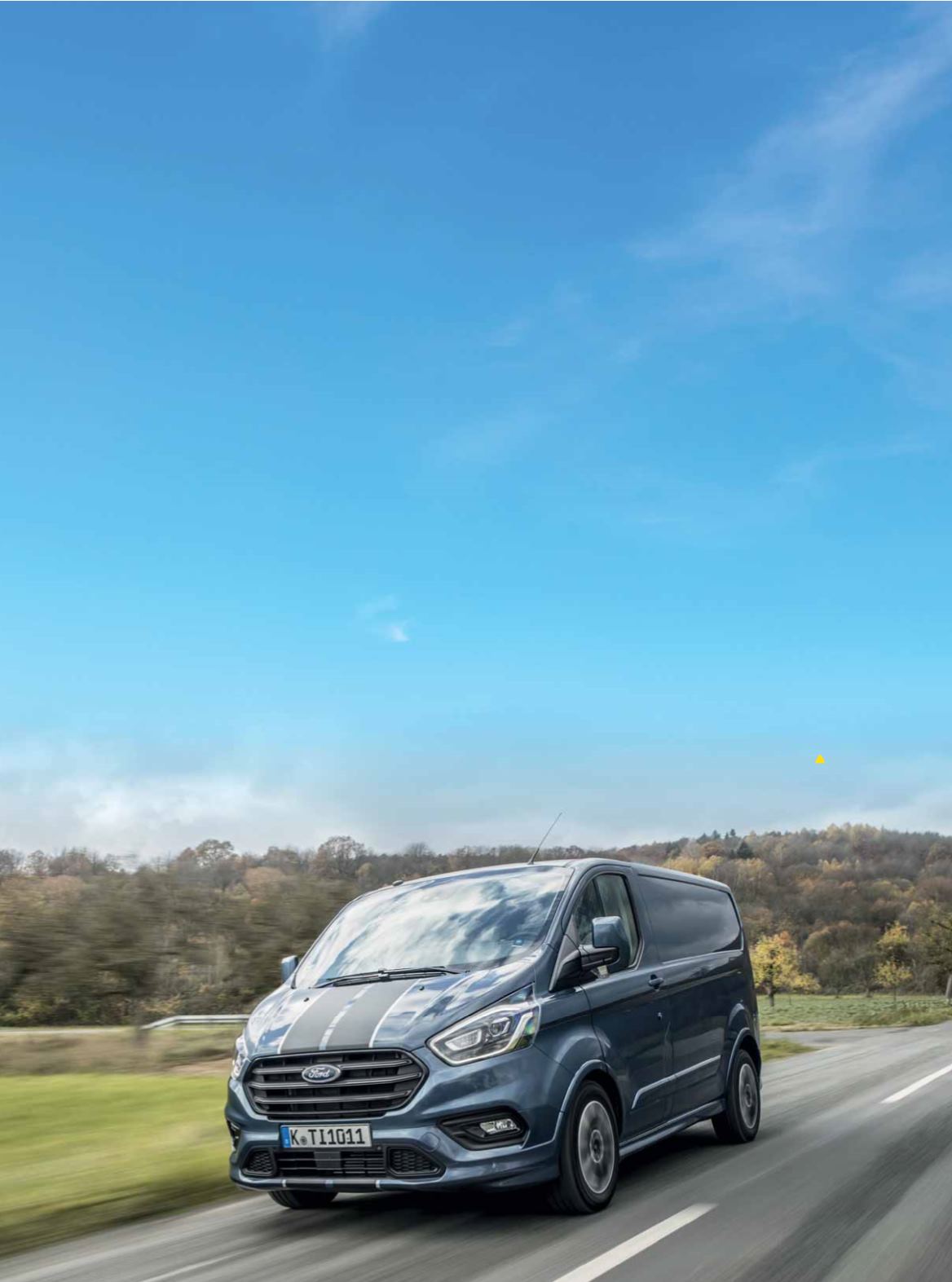

F
ord Australia has introduced
a wide-ranging update to
its Transit Custom van that
includes powertrain, payload and
towing capacity improvements, new
variants and extra high-level driver-
assist safety systems fitted standard
across the range.
Transit’s safety package was
already comprehensive, but now goes
even further with a host of advanced
technology like autonomous emergency
braking (with pedestrian detection),
adaptive cruise control, traffic sign
recognition, blind-spot monitoring,
rear cross-traffic alert, lane-keeping
assistance with a driver alert system
and automatic headlamps – including
auto dip when on high beam.
Rain-sensing windscreen wipers
are also now included on a list that
runs to six airbags, full-colour rear-
view camera, Sync emergency assist
(automatically calling for help in
the event of a crash), front and rear
parking sensors and a variety of
electric handling aids such as dynamic
stability control, rollover mitigation,
trailer sway control, crosswind
stabilisation, load adaptive control and
hill launch assist.
On the powertrain front, Transit
Custom’s 2.0L EcoBlue four-cylinder
turbo-diesel has been revised to meet
Euro 6.2 emissions standards and in
the process raises power and torque
to 125kW (+29kW) and 390Nm (+5Nm)
respectively on all models bar the
newly introduced Sport variant, which
uses a meatier 136kW/405Nm version.
Alongside the engine tweak, the
Transit Custom short-wheelbase
models now have a higher gross
vehicle mass (GVM) – up to 3,400kg
(as denoted by the 340S model
designation, replacing 300S) and, as a
result, a higher braked towing capacity
in the six-speed automatic version of
2,150kg (up from 1,800kg).
As well as extra grunt, which
combines with the six-speed auto only,
the new 320S Sport Van has unique
styling elements including 17” black
machined alloy wheels, a body kit,
racing-style stripes, gloss-black grille,
body-coloured mirrors and, not least
of all, hi-tech bi-Xenon headlights
with static bending and LED daytime
runners. Standing out from the crowd,
it also has two exclusive metallic
colours – blue and orange.
One downside is that the sportier
wheel and tyre specification does
reduce GVM slightly to 3,200kg.
Ford has also introduced a new
Double Cab-in-Van (DCiV) body style
based on the long-wheelbase Transit
Custom that can carry up to six
occupants (three each at front and
back) and still offer 4.4m
3
of load
space. The regular SWB low-roof model
offers 6m
3
, and the LWB 6.8m
3
.
A rear bulkhead is standard and the
rear seats are accessed via the dual
side loading doors, while both regular
and Sport variants are also available –
the latter using only five seats (in a 2+3
layout) and carrying some minor spec
differences, such as sat-nav on-board
but cornering lights not.
Ongoing updates now see the cabin
of all models equipped with the Sync 3
infotainment system with 8.0” touch
screen, Apple CarPlay and Android
Auto smart phone capability, 4.2”
colour instrument cluster (previously
optional), heated windscreen/seats
and the programmable MyKey that
can be used to tailor settings such as
speed, audio and driver assist tech.
The other headline attraction is an
aftersales care package that includes
a five-year/unlimited-kilometre
warranty, 30,000km service intervals
and fixed-price servicing for the first
four years (or 120,000km).
FORD TRANSIT CUSTOM
















